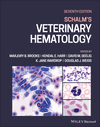Transforming Retroviruses
Summary
Retroviruses are enveloped RNA viruses that replicate via a DNA intermediate that becomes integrated into the host genome. Retroviruses exist both as exogenous and endogenous forms. The retroviral life cycle is complex and includes variations between different retroviruses; however, the basic template is similar. The family Retroviridae contains two subfamilies. The Orthoretroviruses contain six of the seven genera, while Spumaretroviruses comprise only the spumaviruses. Gammaretroviruses comprise the largest number of species and infect mammalian, avian, and reptilian hosts. Key gammaretroviruses include feline leukemia virus, the murine leukemia viruses, and the avian reticuloendotheliosis virus. One of the most common mechanisms of retroviralinduced leukemogenesis is through insertional activation, which is the activation of proto-oncogenes following proviral integration. Retroviruses can induce oncogenic transformation through a number of mechanisms. Oncogenes are genes whose products contribute to the formation of cancer. The best characterized is Rous sarcoma virus which encodes a protein kinase through src viral oncogene.



